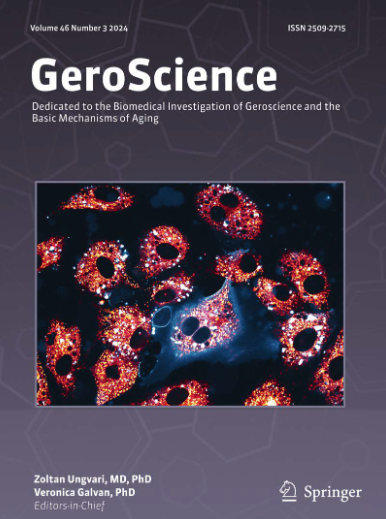One-year concurrent training improves physical performance and handgrip strength in nursing home residents.
IF 5.3
2区 医学
Q1 GERIATRICS & GERONTOLOGY
引用次数: 0
Abstract
This parallel two-arm pragmatic controlled trial aimed to examine the effectiveness of a 12-month exercise intervention on physical performance, handgrip strength, independence in basic activities of daily living (BADL), and falls in real-world settings. Ninety-five older residents of nursing homes (mean age 81.9 ± 8.0 years) were allocated to either an exercise (n = 43) or usual care only (n = 52) group. The 12-month exercise training consisted of resistance and aerobic exercises (2 days/week), while the usual care consisted of everyday routine and standard care. The primary endpoint was the change in physical performance measured by the short physical performance battery (SPPB, score range 0-12). The secondary endpoints were changes in handgrip strength, independence in BADL measured by the Barthel index (BI), and the rate of falls. The exercise intervention significantly provided benefits over usual care on SPPB score by 2.59 points (95% CI: 1.75, 3.43) and handgrip strength by 1.85 kgf (95% CI: 0.56, 3.14). No significant between-group differences were observed for the BI or the rate of falls. However, within-group analysis revealed a significant decline in the BI score (- 11.8) and an increase in the rate of falls (+ 31.5 falls per 100 person-years) in the usual care group. Long-term concurrent exercise programme significantly improved physical performance and handgrip strength, but not independence in BADL and rate of falls in mostly frail nursing home residents. These findings support the integration of exercise physiologists and exercise programmes into standard care practices in nursing homes to help preserve physical function among residents.为期一年的同步训练改善了养老院居民的身体表现和握力。
这项平行的双臂实用对照试验旨在检验12个月的运动干预对身体表现、握力、基本日常生活活动独立性(BADL)和现实环境中跌倒的有效性。95名养老院的老年居民(平均年龄81.9±8.0岁)被分为运动组(n = 43)和常规护理组(n = 52)。12个月的运动训练包括阻力运动和有氧运动(2天/周),常规护理包括日常常规和标准护理。主要终点是通过短物理性能电池(SPPB,评分范围0-12)测量的物理性能的变化。次要终点是握力的变化,由Barthel指数(BI)测量的BADL独立性,以及跌倒率。与常规护理相比,运动干预显著提高了SPPB评分2.59分(95% CI: 1.75, 3.43)和握力1.85 kgf (95% CI: 0.56, 3.14)。在BI或跌倒率方面没有观察到组间的显著差异。然而,组内分析显示,常规护理组BI评分显著下降(- 11.8),跌倒率增加(每100人年+ 31.5次跌倒)。长期同时进行的锻炼计划显著改善了身体表现和握力,但对大多数虚弱的养老院居民的BADL独立性和跌倒率没有改善。这些发现支持将运动生理学家和运动计划纳入养老院的标准护理实践,以帮助保持居民的身体功能。
本文章由计算机程序翻译,如有差异,请以英文原文为准。
求助全文
约1分钟内获得全文
求助全文
来源期刊

GeroScience
Medicine-Complementary and Alternative Medicine
CiteScore
10.50
自引率
5.40%
发文量
182
期刊介绍:
GeroScience is a bi-monthly, international, peer-reviewed journal that publishes articles related to research in the biology of aging and research on biomedical applications that impact aging. The scope of articles to be considered include evolutionary biology, biophysics, genetics, genomics, proteomics, molecular biology, cell biology, biochemistry, endocrinology, immunology, physiology, pharmacology, neuroscience, and psychology.
 求助内容:
求助内容: 应助结果提醒方式:
应助结果提醒方式:


